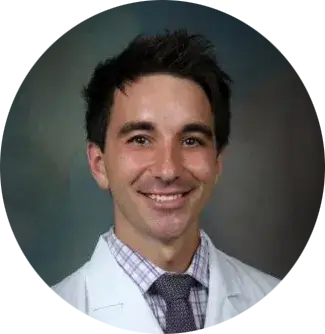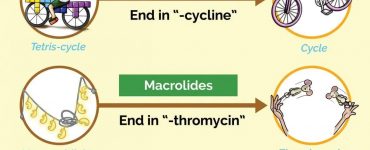
I’m from Arkansas and am a proud 2019 graduate of the University of Arkansas for Medical Sciences. I’m an atypical medical school student because I didn’t go to medical school right after completing my undergrad. When I graduated from college, I didn’t think I was smart enough to go to medical school. I didn’t have the best grades or the best standardized test scores. But, six years later I decided I could do it. So I gave it a shot and I hope that current and future students find my story helpful.
I knew that I would have to study harder than everyone else, so I created a thorough study routine starting from the first day of school. I made the decision to put everything into school and my studying and to stay focused. That means I didn’t have time for a girlfriend or much of a social life during my first two years. But, I was also intentional not to burn out.
During my first two years, I would take a couple hours every week to go rock climbing or go out after an exam. Plus, once I started seeing my Qbank scores, the euphoric rush of doing well kept me on track. Doing well initially motivated me to continually do better throughout school.
There’s no secret to doing well, but I will happily share some of the resources I used in the first two years because I love helping current students succeed. First, I bought Sketchy Medical before I even started medical school because someone told me about it. But after I started school, I heard about Picmonic so I got that too. First Aid for USMLE STEP 1 was another resource I used and referenced, but I didn’t read through it, then there was Firecracker and Pathoma, my second go-to resource (although I hear that lots of students are now using Boards & Beyond as well or in place of Pathoma) and I also downloaded Anki. I took the mnemonics in First Aid and made an Anki deck and put Picmonics into Anki as well. I’ve tried a lot of different resources and combinations and found what worked for me, and I hope it helps you too.
Editors Note:

Picmonic recently released a Picmonic Anki Add-On!
With this direct integration between Anki and Picmonic, students now have instantaneous access to Picmonic thumbnail images, explanations, high-yield fact list, Video and Quiz for any Anki flashcard they are studying.
Learn more & download the Add-On here!
Prioritizing STEP 1 started in my first year of medical school. I made sure I learned the material well when I was in class, which made my review time more efficient. So let’s start with how I studied during my first year.
An important piece of advice — Your “dedicated” USMLE prep study time is NOT the time to start studying for STEP 1. Start on day one of medical school, work hard in all classes and make good use of the time you are given throughout the year.

How I Prepped for Classes
My approach was to create a framework with the information to help me retain it better. I would learn a topic and review it before I watched class lectures so I had a better understanding of what I was learning in class. This process helped me remember all of the little details better.
I learned Microbes with Sketchy Medical. But Sketchy Medical videos can get very long, like 30 minutes to an hour. This kind of video is better if you need to relearn information, but not regular review. One thing that worked really well when learning new topics was starting with Picmonic to introduce myself to the topic even before class. It took less time and the Picmonic videos gave me a good first overview of the important facts and details.
Picmonic wasn’t easy for me to learn the first time. The characters and stories in the Picmonics may seem random, but Picmonic covers a lot more material a lot faster. The fact that the Picmonics are more random actually makes it easier to remember the facts long term. The spaced repetition Daily Quizzes makes Picmonic even better!
So Picmonic became the backbone of how I studied for classes and I found it to be a great medical school study tool. I familiarized myself with the pictures for each topic, and they became “rooms” (for those of you familiar with Memory Places) where I could go in order to remember what I learned. Then I watched Pathoma for those same topics. After that, I reviewed the Picmonic and took the low stakes recall quiz. Repeating this method was like my own spaced repetition. I added any other facts that I needed to know into the Picmonic, too. I love that you can add other facts with Picmonic, and I would sometimes do this with a Sketchy Medical image too, and it made Sketchy better. It’s only at this point that I watched the class lecture. I know this sounds like a lot of time, but I learned the material so much better the first time, which made review in my second year so much easier. It was a great time investment for my first year that really paid off.
Picmonic is especially beneficial for specific organ-based learning (Cardio, Endo, GI, GU, Heme/Onc, MSS, Nervous, Repro, Resp, etc), physiology based courses, and disease specific learning, disease processes like lysosomal diseases, glycogen storage diseases, vitamins, etc. I think it is best to start Picmonic in your first year once disease names begin in Biochem. It’s also worth investing the time and money your first year because Picmonic will save you time and stress later. My review time was much more effective because I learned it the first time with Picmonic.
Finally, I added screenshots of Picmonic into an Anki deck. That’s how I did it! But you could use Spaced Repetition in Picmonic instead. I have talked to other students and they are doing exceptionally well using Picmonic’s Spaced Repetition Daily Quiz.
Looking over Community Facts (information other student’s add to the Picmonic topics), especially the ones that were frequently added gave me a sense of what was important to know. Then I would add it to my personal Playlist of Picmonics to review.
I also want to mention that creating Picmonics became kind of a creative outlet. I created Picmonics for low yield diseases and adjusted existing Picmonics to help me remember the facts better. This was my way of studying.

Prepping for STEP 1 and Approach to Qbank Questions
My main advice is to study WELL before the “dedicated” STEP prep study time. I wish I would have started my STEP 1 prep earlier. It would have been great to finish both Kaplan Qbank and UWorld Qbank before I got to “dedicated” study time, so I could have just focused on review. Therefore, I would recommend starting your first Qbank within one to two months after beginning your second year. My goal was to do 10 questions every weekday, then on the weekends I would do at least one – sometimes two – 40 question blocks.
It was when I was using the Qbanks that I realized just how helpful Picmonic really was. Sometimes, I didn’t know the answer to a question but the answer choices sparked a vague memory of the Picmonic. The way Picmonic is designed to work is exactly how it helped me. During review, I’d be looking at the answer options and the Picmonic for the correct answer would make certain answers stand out, which helped me recall the Picmonic characters and story. That process cemented the relationship between the prompt and the correct answer. It all just made sense.
For example, I once saw “aryl sulfatase” in the prompt and not knowing what it was, but seeing that “metachromatic leukodystrophy” was one of the answers…. I remembered a Picmonic with a METAL LUKE SKYWALKER! I recalled that there was a guy on the ground with a bow and a match next to metal Luke….. ARROW OF SULFUR! Then I saw the connection to ARYL SULFATASE! I was actually learning from the rest of the prompt in the middle of an exam. And those things stick with you well beyond the exam too.
Another example, the prompt says “Confusion,” and I remembered a Picmonic with OLD CONFUSED GUY, SITTING NEXT TO A TAXI! So I thought, “Let’s see if ataxia is in the prompt,” and it was! It’s like the prompt and the Picmonic were feeding off each other, working together to repaint the entire Picmonic I only viewed twice about three months before. As I was running out of study time, I had to prioritize how to spend the rest of my time. After seeing how that Picmonic worked to help me answer a question about Ataxia – a disease I spent little time learning – I would be crazy not to spend more time with Picmonic.
That is how I used Picmonic to study with the QBank. When I got a wrong answer, I reviewed the Picmonic to see if the fact was included in the characters or story. If not, I would add it in a way that was memorable to me. Also, getting the answer wrong in a way helped me remember the Picmonic better because I would get mad at myself for not getting the question right in the first place. Emotion is a powerful memory tool. And luckily, I was getting questions wrong at the right time (studying) and not during the actual exam. It was a very active process!
If I encountered questions I’d never heard of, or answered a question that was supposedly correct but that I had no idea why, I looked to see if there was a Picmonic for that topic. Then I used the Picmonic to learn the details before continuing. Similarly, if I got a question correct but my memory of the Picmonic was vague, I quickly reviewed the Picmonic again. I also reviewed the incorrect answers and Qbank explanations for every question. And if a Picmonic existed, I learned it to lock in the details.
By using Picmonic, I was able to remember the smallest detail for the new facts I had to learn while reviewing with Qbanks. For these new Picmonics, I probably had to refer to them several times before the exam. And I highly recommend downloading Picmonics on your phone to give your more time to review.

Using First Aid for USMLE STEP 1
First Aid is particularly helpful for Pediatrics since it goes into more depth than Qbanks. I also like the fact that there is a First Aid Playlist in Picmonic that will show you Picmonics in the order that you review the topics in First Aid.
I did First Aid Review but eventually had to stop reading it. It’s wasn’t the greatest way to make connections; just reading through different organs. Eventually I found that First Aid was best for referencing things as needed.
Starting in my second year, I used Anki mainly for practicing word mnemonics from First Aid. It was worth it for me at the beginning, but in the spring I stopped doing them in the interest of time.

Using Qbanks for STEP 1 Prep and “Dedicated”
Through my research I found most students who scored 68% on two different Qbanks, worked on them thoroughly. I learned that on average, those who used both question banks scored about 240. So I used both.
Kaplan was very helpful when I was confused about the questions. I would use the Feedback feature which sends your question to a professional teacher. However helpful that was, I found the UWorld explanations more concise. With Kaplan, I spent a long time reviewing the questions, even the ones I got right. There’s still a lot you can learn about a topic from the explanations when you get a question right. I started UWorld during my “Dedicated” study time.
A Qbank will teach you how to apply your knowledge and approach questions correctly, but it won’t help you memorize the facts. That’s why I used Picmonic alongside the Qbanks to help review all of the details for a topic. The Picmonic community is another great feature. If there wasn’t a Picmonic for a specific topic, often a member of the community created one for others to use!
I re-reviewed Physiology of – and the physics behind – the Pulmonary pathophysiology right before dedicated. Some smart guy made a UWorld smart book for STEP 1 on Anki. I used this to re-review Pulmonary. Picmonic is also a great review tool during your third year, but mainly if you invested time in them during first and/or second year.
Dedicated study time should be the time you are fine tuning what you already know, not learning new facts. The more you have to learn new things during dedicated, the greater the chance you will not do as well as you could. Learn what you can while in class, and don’t even consider the idea that six weeks is enough time to cover all the slacking you did during school. If you only have two months to prep for USMLE STEP 1, focus on the Qbanks and only use Picmonic if you’re having trouble remembering something. The combination will really help.
Most of my six-week dedicated study time was spent reviewing UWorld question blocks. During dedicated, I decided to make an additional Anki smart book based on UWorld info, knowing I would likely not review them. Just the idea of putting what I learned into my own words while typing was very helpful.
My last piece of advice is review and practice the biostats and formulas. Picmonic even has some great videos on things like Odds Ratio, Relative Risk, and the different Study methods.
In conclusion, I hope that this advice can help other med students like me who in their first year try to figure out the best resources to use out of the thousands of resources out there. Before I found Picmonic I spent a lot of time memorizing facts. With Picmonic I could entertain myself into memorizing the same facts and with these “pictures” in my head, I kept getting the right answers over and over again. And I wouldn’t forget the information right after the exam. In short, Picmonic is a big part of the reason I did well on STEP 1.
Download our mobile app and take Picmonic on the go!

















